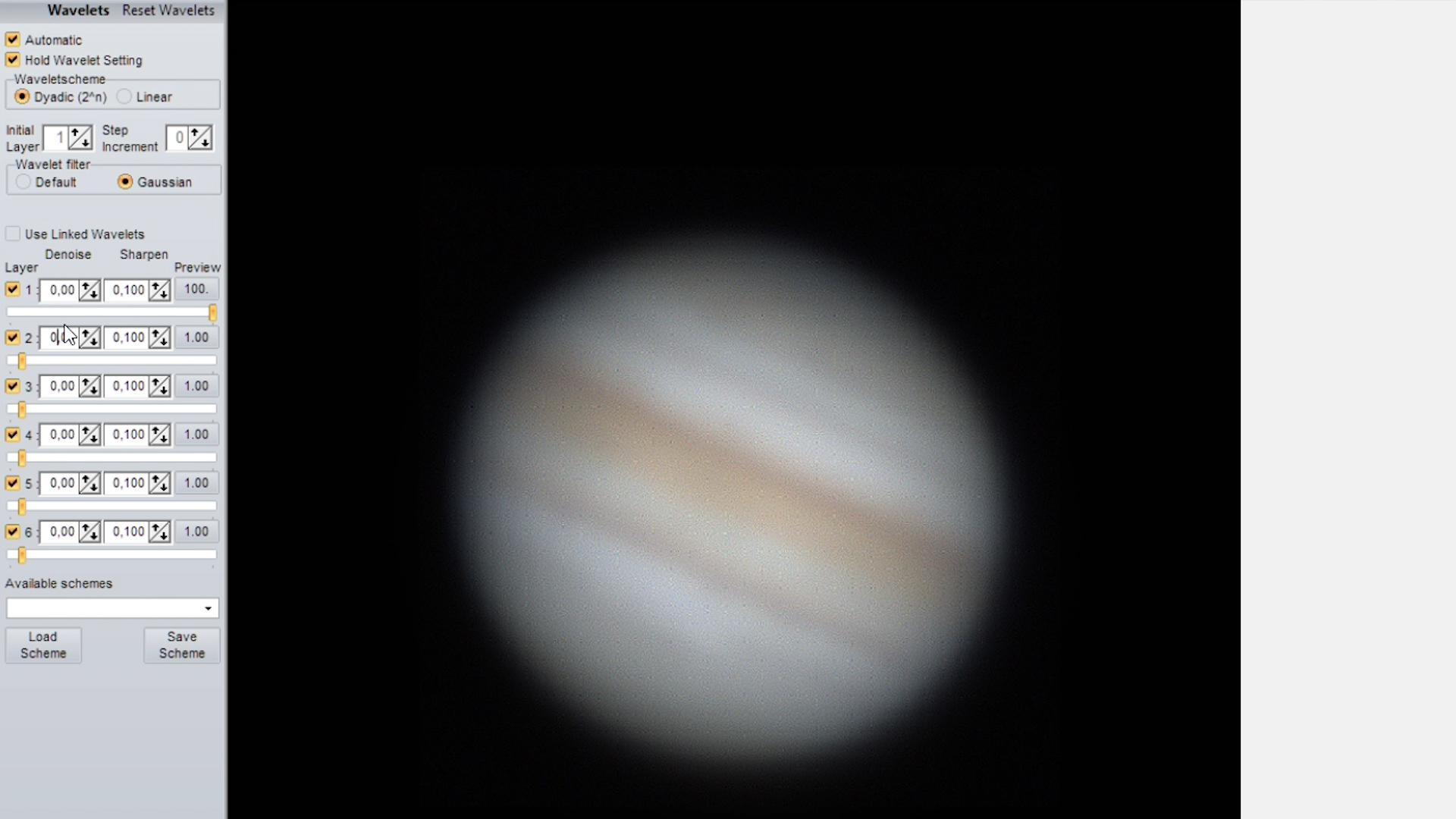

#DOWNLOAD REGISTAX 6 TUTORIAL JUPITER SOFTWARE#
But the software offers as well different resizing filters to be chosen following your needs ! Indeed, the main processing window already allows you to reduce noise. Registax 6 reconciled me with enlargement ) The enlargement of images has a drawback: contrast is weakened and noise is enlarged as well. Before using Registax 6 I was never doing this.

Why enlarging the images ? This is an optional step none the less it can be interesting because the final goal is to make the smallest details well visible, and a greater image size will of course help it. Take care of the smallest details: noise reduction must not erase them! Most of the time the value I used is under 0,1 (my processing was a bit hard here ) ) Enlarging the images with Registax 6 You can refine directly the value inside the box, with a variation of one tenth (0,06 to 0,07…) but you can even go to one hundredth, like here at layer two (0,125). The increment is then by step of 0,05, which is not very precise. You can make them vary up and down with the arrows. The result is well contrasted, but the image is too noisy !Īt this step you can use the gaussian filters with the Denoise filters at left. Here the 1 and 2 are set up to 100 % at first, but by using the Sharpen filter you can set them to more than 100 (here, 140 and 110 respectively). Push the sliders to the right to the point where the enhancement of details is nice to you. The relevant layers to be used will vary following the sampling, the target and the conditions, but I first use the 2nd layer, then the 1st, partially the 3rd but never the 4/5/6. Make sure as well that the gaussian filters are on. Here is the first step of my usual processing routine. With Registax 6, the gaussian blur is completely integrated to the processing software and you drive it like the wavelets, with sliders. More over, applying the gaussian blur asks you a subtile estimation of the strength you must use: too weak, noise is still there too strong, true details are blurred as well! And under some softwares one has to apply fastidious repeated sequences: blurring, re-loading of the image, new blur, etc. Wavelet filters are found in almost every planetary software but to use gaussian blur one could be forced to open a second software. The first enhances the contrast, the last is used to fight the apparition of noise at very small scale. Traditionally, detail enhancement is achieved combining two tools: the wavelets and the gaussian blur. It presents the particular disadvantage to most affect the first layers of wavelets, those one that also shows the smaller details. Too often noise it the element that will bring a limit to the enhancement of planetary details. To me it is strong on two points: noise reduction, and resizing.

I have always difficulties to perceive real differences between softwares when aligning or selecting frames but there is one step where Registax 6 looks unbeatable to me: the good enhancement of details. Registax 6 is one of the best planetary processing softwares. But to finalise the processing, and whatever software I have used, I always go back to Registax 6 ! Here is why… There are many processing software for planetary imaging, and many are excellents.


 0 kommentar(er)
0 kommentar(er)
